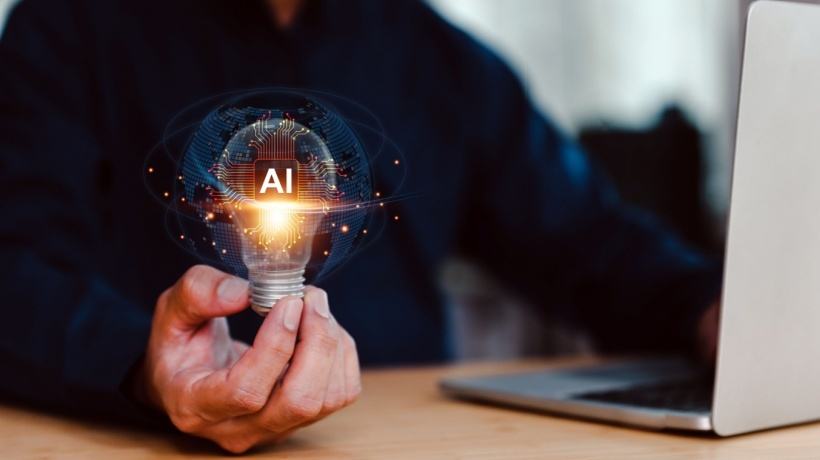HI + AI In L&D: A Perfect Partnership?
Is it likely that over time training deliverables will become more and more AI-driven and AI developed? Our experts say yes, but that won’t eliminate the need for human expertise.
We spoke with Adrián Soto, SweetRush’s Director of Emerging Technologies and Emily Dale, Immersive Learning Strategist at SweetRush, to find out how the “HI + AI” partnership is emerging today and will evolve in the future. Here are three key insights for L&D leaders.
Know Your Goals, Optimize Your Team
Two pathways for the use of generative AI in learning experience design are, first, making training easier and faster to produce through automation, and second, making training more effective and impactful through greater personalization, real-time response, and more. Knowing which path you’re in and assigning the right team will set you up for success.
“The first path is going to make learning more democratized,” says Adrián. “As everyone gains access to new tools with AI, there are going to be new expectations around speed to market.” The human role in the partnership needs to embrace establishing quality standards for your organization and ensuring the output meets those standards; these teams will need to be adept at rigorous testing and analysis.
In the second path, you’ll see “leaders demanding excellence,” through their own drive and passion, because of the high-impact and high-profile nature of the learning need, or both. According to Adrián, “this training is going to be more human-driven, but AI-enhanced, and raise the bar on what extraordinary content is.” Here you’ll need your pioneers and innovators who excel in agile methods of working, R&D, and creative collaboration.
Mitigating Bias: Do Your Research, Consider Your Needs
While we all recognize the need to forge forward in discovering the best ways to use AI tools, the potential ethical and legal issues are very much a reality. L&D leaders should absolutely be concerned about mitigating bias as their teams experiment with using AI tools.
Adrián cautions against underestimating the human factor. “Anyone contributing to training development—a learning experience designer, a subject matter expert—can have a particular bias. They will bring that to the job regardless of what technology they’re using. The challenge with AI is that it’s giving a superpower to that person with the bias, which is scale,” says Adrián.
He adds: “Now they are able to create even more content with that bias, supported by AI tools that allow them to move faster and do more. So this was a prior issue that gets magnified with AI. This means that whatever policies and safeguards the company has against this need to become more magnified as well.”
Emily suggests doing your homework: “There are LLMs and AI tools that have shown more bias and ideologies of their employees, and the AI providers are working to correct these issues. Stanford released an index that goes into some detail on which AI tools are more objective or demonstrate less bias in their outputs.”
She also recommends asking really good questions about how bias might impact your specific business model or customers. “You can then integrate that into your prompt design, and mitigate bias by, for example, ensuring you have diversity in learner empathy interviews,” says Emily.
Institutional Knowledge Vs. Institutional Wisdom
How do we ensure that the creativity and innovation of humans are still prevalent in our learning strategy and design?
“One of the ideas that we’re evolving is the difference between institutional knowledge and institutional wisdom,” says Emily. As she explains it, institutional knowledge is becoming more and more readily accessible, whether it’s through eLearning or AI, which makes it easily codified and of less value.
By contrast, she says, “Institutional wisdom is stories, direct human experience, culture, the consciousness of an organization, a repository of memories. Retiring legacy employees that have so much wisdom to share about history.”
For L&D leaders exploring the use of AI, the HI + AI partnership is key to ensuring these human elements are harnessed, channeled, and amplified into impactful learning experiences.
Download the L&D And Learner Experience 2024 Trends Report today to delve into the findings and discover how you can leverage the latest technologies and strategies to enhance your training program and encourage meaningful change.

SweetRush
Our job is to help you achieve your objectives and be successful. Engage us at any point, from analysis to custom development (including e-learning, mobile, gamification, and ILT) to evaluation.

